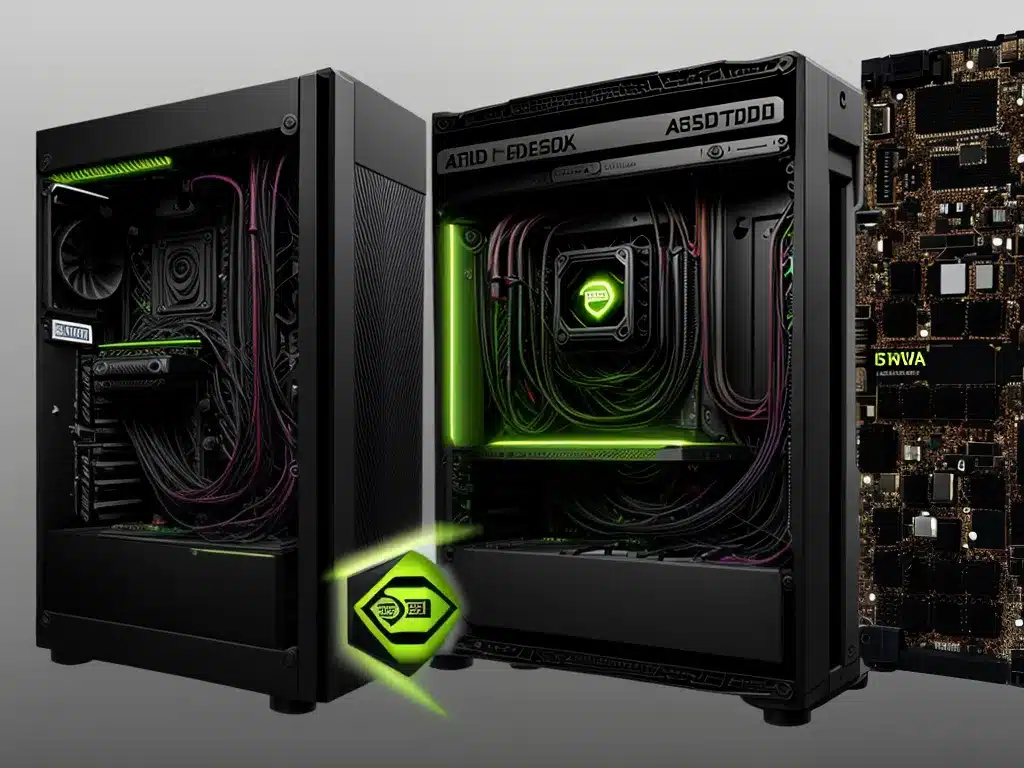
Introduction
Nvidia DLSS (Deep Learning Super Sampling) and AMD FSR (FidelityFX Super Resolution) are two competing AI-powered upscaling technologies that allow games to render at lower resolutions and then upscale to higher target resolutions with improved image quality compared to traditional upscaling methods. In this article, I will compare the benefits and drawbacks of these two technologies.
How DLSS and FSR Work
Nvidia DLSS
DLSS uses deep learning and AI to upscale lower resolution images to higher target resolutions. It first renders the game at a lower resolution, then uses a deep learning neural network to intelligently reconstruct the details and textures of a high resolution image.
The DLSS model is trained on extremely high resolution reference game images, learning what realistic detail should look like. This training data allows it to effectively fill in missing detail when upscaling.
AMD FSR
FSR is an open source spatial upscaling algorithm. It does not use any AI or deep learning. FSR renders the game at a lower resolution, then applies sharpening and edge reconstruction techniques to upscale to a higher target resolution.
FSR relies on custom image enhancement algorithms rather than deep learning training data. This allows it to work across a wide range of hardware.
Image Quality Comparison
In terms of image quality, DLSS generally produces noticeably better results compared to FSR, especially at higher upscaling factors like 4K.
DLSS does a better job at reconstructing fine details and textures, while FSR can sometimes introduce artifacts and oversharpening.
However, FSR has improved significantly with FSR 2.0, closing the gap in quality. But DLSS still pulls ahead in most instances.
Performance and Efficiency
Both DLSS and FSR can provide significant performance boosts by rendering at lower resolutions. Depending on the specific game and settings, they can increase average FPS by 50% or more.
DLSS has an advantage when it comes to efficiency. Because it uses AI and deep learning, it needs less information from the lower resolution image to reconstruct higher resolutions.
FSR requires rendering at a closer-to-target resolution to achieve equivalent image quality as DLSS. So DLSS provides performance benefits from rendering at an even lower internal resolution.
Hardware Compatibility
A major advantage of AMD FSR is that it works across a wide range of hardware, both AMD and Nvidia graphics cards. DLSS only works on Nvidia RTX cards.
FSR’s open source nature allows it to be easily integrated into games and leveraged by any system. DLSS requires specific AI Tensor Core hardware only found in RTX cards.
So for non-RTX owners, FSR is currently the only upscaling option available.
Game Support
DLSS has been available for longer and has amassed support in over 130 games. FSR is newer but also growing quickly, with over 50 games integrating the tech so far.
DLSS enjoys strong 1st party support in major titles like Cyberpunk 2077, but FSR is gaining traction as an open standard. More games are likely to implement FSR alongside or in lieu of DLSS in the future.
Conclusion
In summary, while DLSS delivers better image quality and efficiency, FSR has the advantages of broader hardware support, open source accessibility, and rapidly growing integration.
FSR 2.0 has also significantly closed the image quality gap compared to DLSS. For non-RTX owners, FSR is currently the only viable upscaling solution.
Overall, both technologies provide meaningful performance benefits and represent important innovations in upscaling and efficiency for modern games. DLSS and FSR will likely co-exist going forward as complementary solutions.












